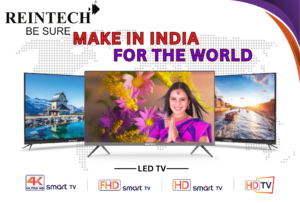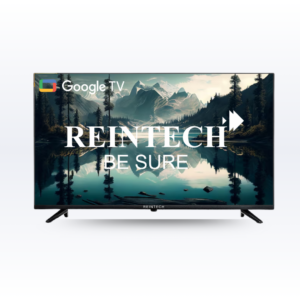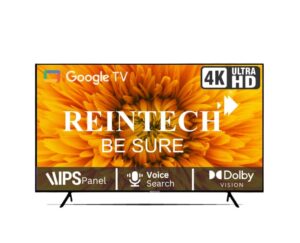The landscape of television LED TV manufacturer technology has been dramatically transformed over the years, evolving from the early days of black-and-white screens to the cutting-edge LED TV of today. This article delves into the significant milestones and emerging trends that are shaping the future of TV viewing. We’ll explore the sleek design evolution, color accuracy advancements, smart features, and the potential impact of technologies like 8K resolution, augmented reality, and 5G on how we consume home entertainment.

Key Takeaways
- The design of TVs has significantly evolved from bulky CRTs to ultra-thin LED screens, enhancing user experience and aesthetics.
- LED TV technology now offers expanded color gamut’s and improved realism, providing viewers with a more immersive visual experience.
- Smart features and AI integration have transformed LED TVs into central hubs for home entertainment and smart home connectivity.
- The introduction of 8K resolution in LED TVs is pushing the boundaries of image clarity, although content availability remains a challenge.
- Environmental considerations are increasingly important in the manufacturing and lifecycle of LED TVs, with a focus on energy efficiency and sustainability.
F From Bulky Boxes to Sleek Screens: The Journey of Led TV manufacturer
The Rise of Flat-Screen TVs
Remember the days when TVs were massive furniture pieces in the living room? We’ve come a long way since then. Flat-screen TVs have revolutionized the way we design our spaces, prioritizing sleek and minimalist designs that complement contemporary interior aesthetics. They’ve become the standard, with their slim profiles and lightweight structures allowing for versatile placement options, from floating shelves to wall-mounted consoles.
The Impact of Design on User Experience
It’s not just about looking good. The design of a TV can significantly affect how we enjoy our favorite shows and movies. A well-designed TV unit can enhance the viewing experience by reducing clutter, improving sound quality, and even protecting our eyes with better viewing angles. It’s all about creating an environment that’s comfortable and conducive to getting lost in whatever world we’re watching.
The Shift Towards Ultra-Thin Displays
The quest for the thinnest TV has become a race among manufacturers. Ultra-thin displays are not just aesthetically pleasing; they’re a marvel of engineering. With each passing year, TVs get slimmer, and the technology behind them becomes more advanced. This relentless pursuit has led to innovations in screen technology, materials, and even how we interact with our TVs.
In the evolution of TV design, the shift towards ultra-thin displays is not just a trend, it’s a testament to the incredible advancements in technology and design aesthetics.
- The Evolution of Television
- From Traditional to Streaming Formats
- Cutting-Edge Trends in TV Tech
- The 1960s: Creative and Bizarre TV Designs
The journey from bulky boxes to sleek screens is a story of relentless innovation and a redefinition of home entertainment. As we look to the future, it’s clear that the evolution of TV design will continue to surprise and delight us.
The Color Spectrum Revolution: Advances in LED Color Accuracy

Beyond RGB: Expanding Color Gamut’s
LED TVs are no longer just about the basic red, green, and blue. We’re talking a spectrum that’s as rich and diverse as a painter’s palette. With the ability to display up to sixteen million colors, the latest LED TVs bring the real world right into your living room. Here’s a quick look at how color gamut’s have expanded:
| Year | Standard Color Gamut | Expanded Color Gamut |
|---|---|---|
| 2018 | 72% NTSC | 90% NTSC |
| 2021 | 76% NTSC | 96% NTSC |
| 2024 | 80% NTSC | 99% NTSC |
How LED Improvements Enhance Realism
The secret sauce to that jaw-dropping, immersive viewing experience? High contrast ratios and advanced color calibration. Dark scenes are as deep as the ocean, and bright ones shine like the sun. It’s all about those subtle shades and highlights that make everything look just right.
- Increased color gamut for vibrant displays
- Higher contrast ratios for clear dark and white hues
- Color calibration technologies for accurate color representation
The Science of Color in LED TVs
It’s not just magic; it’s science. Innovations in optics and materials science are the game changers here. Displays that adjust color temperature to match the environment mean no more eye strain from blue light at night. And let’s not forget about the universal compatibility that’s becoming a must-have with display interface standards.
Forward progress in material science and optics will immensely impact the development of LEDs, particularly in color accuracy and display quality.
Smart Features and Connectivity: LED TVs as the Hub of Home Entertainment
Integrating Streaming Services
Smart TVs have revolutionized the way we consume media, transforming from mere display devices to comprehensive entertainment hubs. The integration of streaming services has been a game-changer, allowing users to access a plethora of content at their fingertips. With platforms like Netflix, Hulu, and Amazon Prime pre-installed, the need for external devices has diminished.
- Ease of access: Users can start streaming with just a few clicks.
- Variety of content: From movies to series, there’s something for everyone.
- Personalized recommendations: Algorithms suggest content based on viewing habits.
The Role of AI in Personalized Viewing
The incorporation of Artificial Intelligence (AI) in smart TVs is not just a buzzword; it’s a reality that’s enhancing user experience. AI algorithms analyze viewing patterns to provide personalized content suggestions. This smart feature ensures that users spend less time browsing and more time enjoying content that resonates with their preferences.
- Smart search: Voice commands make finding content easier.
- User profiles: Different family members get tailored content.
Smart Home Integration and IoT
As the nerve center of home entertainment, LED TVs are now pivotal in the smart home ecosystem. They connect with various Internet of Things (IoT) devices, enabling control over lighting, thermostats, and even security cameras. This integration creates a cohesive and convenient living environment.
- Voice control: Manage your smart home devices through your TV.
- Seamless connectivity: A unified system for all smart devices.
The rise of smart TVs is a testament to the ever-evolving landscape of home entertainment, where convenience and innovation meet to provide an unparalleled viewing experience.
The Magic of 8K: Pushing the Boundaries of Resolution
Understanding 8K Technology
8K technology is redefining what we expect from our screens, offering a visual feast that’s as close to reality as it gets. With a resolution of 7680 x 4320 pixels, it’s not just an upgrade; it’s a revolution in clarity and detail. Here’s a quick look at how it compares to other resolutions:

| Resolution | Pixels | Comparative Detail Level |
|---|---|---|
| Full HD (1080p) | 1920×1080 | Standard Definition |
| 4K (UHD) | 3840×2160 | 4x Full HD |
| 8K (UHD) | 7680×4320 | 16x Full HD |
The Content Challenge: Is There Enough 8K?
While the tech is impressive, the availability of 8K content is still catching up. Production is costly, and bandwidth requirements are hefty. But as more creators jump on the 8K bandwagon, we’re seeing a slow but steady increase in content that truly showcases what these TVs can do.
- High-speed internet is a must for streaming 8K.
- Storage space for 8K content is significantly larger.
- Adoption of 8K in production is growing, as seen at the 2024 NAB Show.
Future-Proofing with 8K TVs
Investing in an 8K TV is a step towards future-proofing your home entertainment setup. As content and broadcasting standards evolve, 8K TVs will ensure you’re at the forefront, ready to enjoy the next wave of ultra-high-definition content.
Embrace the immersive delight of 8K Ultra HD TVs and be prepared for the future of entertainment.
Eco-Friendly Viewing: The Green Evolution of LED TVs
Energy Efficiency Milestones
LED TVs have come a long way in terms of energy efficiency. LED TV manufacturers have been at the forefront of this evolution, consistently innovating to reduce the power consumption of their displays. Taking a brief glance at a few of the benchmarks:
- Introduction of intelligent power management systems
- Development of advanced LED chips that conserve energy
- Implementation of efficient heat dissipation techniques
These advancements not only contribute to a lower carbon footprint but also lead to significant operational cost savings.
Sustainable Manufacturing Practices
The journey towards sustainability is not just about the end product but also how it’s made. LED TV manufacturers in India, particularly in Delhi, are adopting greener manufacturing practices. This includes:
- Using renewable energy sources during production
- Minimizing waste through improved design and manufacturing processes
- Implementing recycling programs for components and materials
By focusing on sustainable practices, Delhi LED TV manufacturers are setting an example for the industry worldwide.

Recycling and End-of-Life Management
The responsibility of an LED TV manufacturer doesn’t end at the sale. There’s a growing emphasis on the afterlife of products. Effective recycling and end-of-life management strategies are crucial, and they involve:
- Designing TVs for easier disassembly
- Creating take-back schemes for old TVs
- Collaborating with certified recyclers to ensure proper handling of electronic waste
Embracing these eco-friendly approaches, LED TV manufacturers are not just shaping the future of viewing but also protecting our planet for generations to come.
Interactive and Immersive: The Rise of Augmented Reality in TV
Augmented Reality (AR) is not just a buzzword; it’s a game-changer in the realm of television. By overlaying digital information onto our real-world surroundings, AR offers a dynamic and interactive experience that’s pushing the boundaries of traditional TV viewing.
Blending the Real with the Virtual
Imagine watching a football game where stats and player info pop up right on your screen, or a cooking show where recipes float next to the chef. AR is making this a reality, enhancing our viewing pleasure with a layer of digital magic.
AR in Live Sports and Events
Live events are getting a high-tech makeover with AR. From concerts to sports, AR is adding a layer of excitement by providing real-time data and graphics that make you feel like you’re part of the action.
The Future of AR in Home Entertainment
The future looks bright for AR in home entertainment. With trends pointing towards more immersive and personalized experiences, we’re on the cusp of a revolution. Here’s a quick peek at what’s in store:
- Personalized content: AR could tailor your viewing experience to your preferences.
- Interactive advertising: Imagine ads that you can engage with, transforming the way brands connect with viewers.
- Educational programming: AR can turn educational content into an interactive adventure.
AR isn’t just changing how we watch TV; it’s transforming what TV can be.
As we look ahead, it’s clear that AR is set to play a pivotal role in shaping the future of television. With the global AR market projected to skyrocket, we’re just scratching the surface of its potential in home entertainment.
The Next Connectivity Leap: How 5G Will Transform TV Streaming
The Speed and Stability Promise of 5G
5G is set to be a game-changer for TV streaming, offering faster download and upload speeds than ever before. This leap in connectivity means that viewers can expect high-quality streaming with minimal buffering, even on the go. The extra bandwidth that 5G provides ensures that high-resolution content, like 4K and eventually 8K, can be streamed smoothly, making the experience more enjoyable and reliable.
5G and the Explosion of Mobile TV Consumption
With the advent of 5G, watching TV on mobile devices is becoming more seamless. The technology’s low latency and high speed allow for real-time interactivity, which is perfect for live events and sports. Here’s how 5G is expected to boost mobile TV consumption:
- Enhanced quality of video streams
- Reduced buffering and load times
- Ability to handle more simultaneous users
Integrating 5G in Smart TV Technology
The integration of 5G in smart TVs is paving the way for a new era of home entertainment. This integration will enable features such as AR filters to interact with shows in real-time and the use of VR to immerse oneself in events from the comfort of the living room. The table below highlights the anticipated improvements:
| Feature | Before 5G | With 5G |
|---|---|---|
| Latency | High | Low |
| Quality | Standard | High |
| Interactivity | Limited | Extensive |
5G’s impact on television technology is profound, promising a transformative viewing experience that’s faster, more immersive, and incredibly versatile.
As we stand on the brink of a new era in entertainment, 5G technology is set to revolutionize the way we stream TV. With lightning-fast speeds and unparalleled connectivity, your streaming experience will be smoother, clearer, and more immersive than ever before. Don’t get left behind in the old age of buffering and low-resolution videos. Visit Reintech Electronics Pvt. Ltd. to discover how our cutting-edge LED TVs are ready to harness the power of 5G. Take the leap into the future of television streaming with Reintech—where innovation meets performance.
Wrapping It Up: The Future of TV is Bright and Brilliant
As we’ve journeyed through the dynamic landscape of LED TV technology, it’s clear that the horizon is teeming with innovation. From the early days of bulky cathode-ray tubes to the sleek and smart 8K displays of today, the evolution has been nothing short of a visual spectacle. Manufacturers are not just pushing the envelope; they’re redesigning it with AI, flexible OLEDs, and more immersive experiences. So, keep your remotes at the ready, folks—because the future of TV viewing isn’t just bright; it’s downright dazzling. And we can’t wait to see where this technological journey takes us next!
Frequently Asked Questions
How has TV design evolved over the years?
TV design has transformed from bulky, box-like sets to sleek, flat-screen displays. This evolution has been marked by the rise of flat-screen TVs, a focus on user experience, and a shift towards ultra-thin displays, enhancing both aesthetics and functionality.
What are the latest advancements in LED color accuracy?
The latest advancements include expanding color gamuts beyond the traditional RGB spectrum, leading to enhanced realism and a more vivid viewing experience. This is due to improvements in LED technology and a deeper understanding of color science.
How are LED TVs becoming the hub of home entertainment?
LED TVs are now equipped with smart features and connectivity options, integrating streaming services, utilizing AI for personalized viewing, and connecting with other smart home devices through the Internet of Things (IoT).
What is 8K technology, and do we have enough content for it?
8K technology refers to a resolution with four times the pixels of 4K, offering unprecedented detail and clarity. While 8K content is still limited, the industry is preparing for a future where such high-resolution material will be more common.
How are LED TVs becoming more eco-friendly?
LED TV manufacturers are focusing on energy efficiency, sustainable manufacturing practices, and recycling programs to minimize environmental impact, making LED TVs more eco-friendly than ever before.
What role will 5G play in the future of TV streaming?
5G promises to offer faster and more stable connections for TV streaming, potentially leading to an explosion in mobile TV consumption and the integration of 5G technology directly into smart TVs for seamless streaming experiences.
